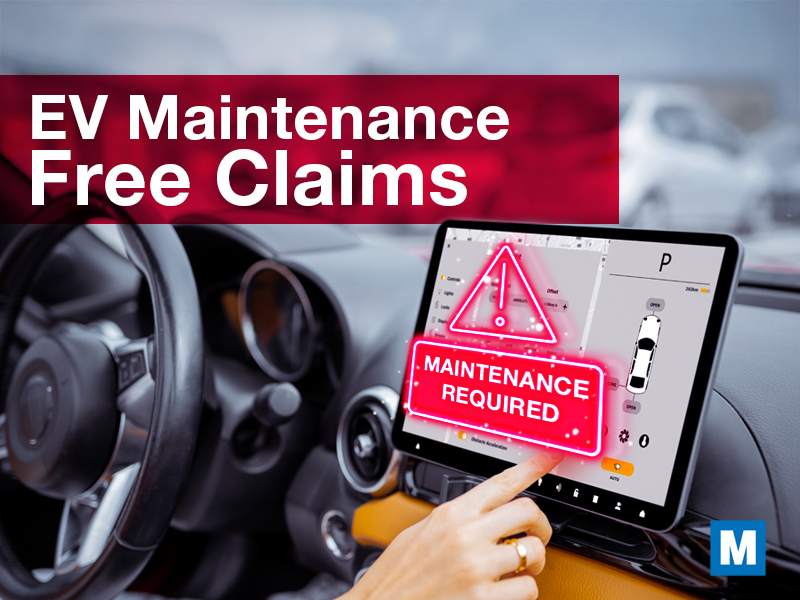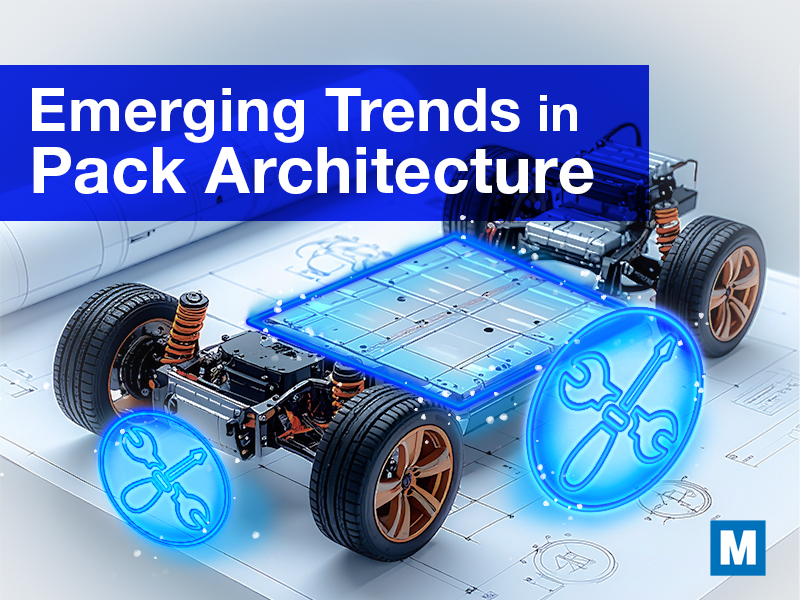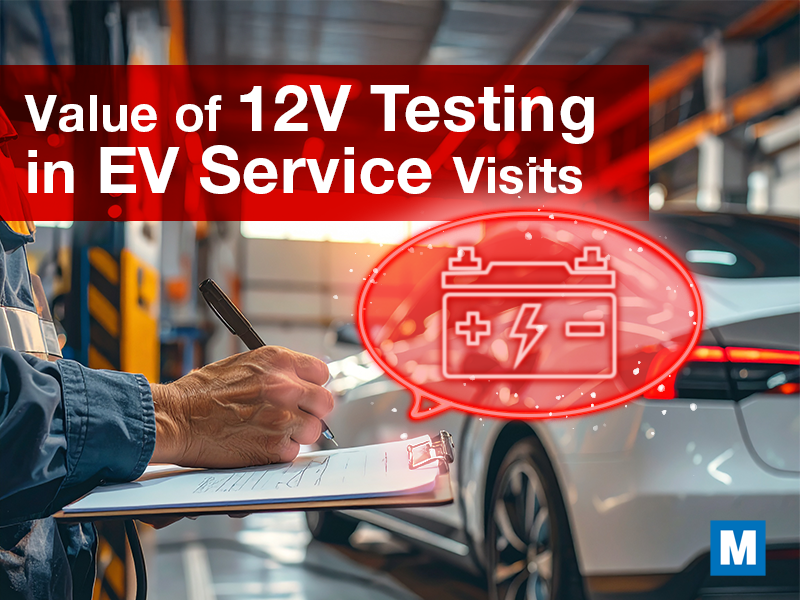There’s a lot of buzz about how electric vehicles are “maintenance-free.” And it’s true, EVs don’t need oil changes, timing belts, or spark plugs. But let’s be honest, no car is truly maintenance-free, and that includes EVs.
If you’re a service advisor, shop owner or manager, or technician working with a growing number of electric vehicle owners, this article is for you. Wwalk through what “maintenance-free” really means in the EV world, what items still need regular attention and when, and how to talk to customers about it without sounding like you’re trying to take their money.
EVs Aren’t Actually Maintenance-Free
It’s easy to see how the myth got started. EVs have fewer moving parts than internal combustion vehicles. There’s no engine to lubricate, no transmission fluid to replace (in most cases), and no exhaust system to rust out. OEMs have marketed these benefits hard, and in many ways, they’re right that maintenance needs are far lower than ICE vehicles.
But that doesn’t mean eliminated. Just because EVs don’t need oil changes doesn’t mean they don’t need service, which you know. Components still wear out, systems still require inspection, and fluids still need to be changed. It just looks a little different than what people are used to.
That’s where shops come in. You need to educate customers, manage expectations, and help them protect their investment.
Why People Think EVs Are Maintenance-Free
The “maintenance-free” claim is mostly about the lack of need for traditional service items. The routine items people are used to vanish when they drive an EV. Combine that with regenerative braking that reduces brake wear and the quiet operation of an electric drivetrain, and it’s easy for a customer to think, “I don’t need to do anything to my car anymore.”
But while EVs need fewer services, the things they do require are no less important.
What EVs Still Need for Regular Maintenance
Look through the maintenance schedule for any EV on the road today and you’ll find that there actually are several routine items that need to be performed. Cost-wise, it’s usually far less than the annual service costs for an ICE vehicle, but there are still items to check off the list.
High-Voltage Battery System Checks (Annually is best)
The most expensive component in an EV is the high-voltage battery, and while it doesn’t need to be replaced regularly, it definitely needs to be monitored. Over time, battery degradation can reduce range, slow charging, and impact performance. Regular battery diagnostic checks can detect early signs of imbalance or problems with thermal regulation.
Service intervals may vary by OEM, but checking the high-voltage system at least once a year or every 12,000 miles is a smart practice. It should take a detailed look at state of health (SoH), cell balance, and overall performance.
Cabin Air Filter Replacement (Every 15,000 to 30,000 miles)
EVs use electric heat pumps and air conditioning systems to manage cabin climate, and that airflow passes through a cabin air filter. A dirty filter restricts airflow, reduces the HVAC system’s ability to cool efficiently, and can strain the system’s electric motor.
OEMs usually recommend replacing the cabin filter every 15,000 to 30,000 miles, though that could be sooner in dusty environments or with sensitive drivers.
Brake Inspection and Fluid Flush (Inspection every 12 months, fluid every 2 to 4 years)
While regenerative braking does reduce the wear on pads and rotors, friction brakes still do their part, especially in emergency stops or at lower speeds. Plus, when brakes don’t get used often, components can corrode, seize, or degrade.
Brake fluid is hygroscopic and still absorbs moisture over time, even in an EV. Most manufacturers call for a fluid flush every two to four years, or approximately every 40,000 to 50,000 miles. Pads, rotors, and calipers should be inspected annually.
Tire Rotation and Replacement (Rotation every 5,000 to 8,000 miles)
EVs are heavier than gasoline vehicles due to their dense battery packs, and they deliver torque instantly. That combination leads to faster tire wear, especially in stop-and-go traffic or when you’re feeling a little spirited behind the wheel.
Sticking with a 5,000- to 8,000-mile rotation interval helps even out treadwear and prolong tire life. Don’t forget to check alignment if there’s uneven wear.
Battery Coolant Service (Varies: Often every 100,000 to 150,000 miles)
Many EVs have a liquid-cooled battery system. That coolant degrades over time, and failure to replace it can lead to thermal issues or reduced battery performance. Most EVs call for this service between 100,000 and 150,000 miles, but it’s worth checking the OEM recommendation in the owner’s manual.
If the coolant looks contaminated, smells odd, or shows signs of poor flow, it may be time to change it even sooner.
Software Updates (As needed or scheduled)
Modern EVs rely on software for everything from battery management to regenerative braking control. Some updates happen over-the-air (OTA), but others require a visit to the dealership or authorized service center.
It’s a good idea to check for updates during regular maintenance visits, especially if the customer reports strange behavior or the range isn’t what it once was.
12-Volt Battery Checks (Annually or at every service)
EVs still use a 12-volt battery to power systems like lighting, door locks, infotainment, and even initiating the high-voltage system. These batteries can die just like in a traditional vehicle, and it ‘bricks’ the vehicle if it does.
Checking state of charge and voltage health during any regular inspection can prevent a no-start situation that catches drivers off guard. It should be at least once a year, which is likely as often as you’ll see the vehicle for maintenance.
How to Talk to Customers About EV Maintenance
This conversation is all about managing expectations. When customers hear “maintenance-free,” they often assume they never need to visit the service department again. That sets them up for disappointment, and sometimes costly repairs down the road.
Start by acknowledging that EVs do require less maintenance than gas-powered vehicles. That’s a selling point, not something to deny. But follow it up with context: the systems that do need attention are still important, and often more expensive to repair if neglected.
Use relatable examples like these:
- “Skipping brake inspections could mean missing rusted calipers that stick when you need them most. Or if your worn-out pads wear grooves into the rotors, it’s going to drastically increase repair costs.”
- “Tires wear faster with instant torque, so rotation and pressure checks can protect your range and your ride.”
- “Your high-voltage battery may be healthy today, but we can check for cell imbalance or overheating to avoid range drops later.”
Avoid fear tactics, but explain the value of preventative care. You may want to offer bundled EV inspections or maintenance packages that make it simple for customers to stay on top of service without worrying about what’s due when – just having a regular annual appointment set.
How Midtronics Can Help Keep EVs Running Right
At Midtronics, our EV battery diagnostic tools are built to help technicians test high-voltage systems safely and accurately. Whether you’re checking state of health, verifying charge balance, or identifying thermal issues, our platforms deliver the data you need to help customers make smart decisions.
Better yet, our tools work fast and integrate easily into your service workflow. That means less guesswork, more confidence, and better results for your shop and for your customers.
Just because EVs skip the oil changes doesn’t mean they can completely skip the shop. And with the right equipment and the right conversations, you can help make sure they stay on the road, running clean and safe, for years to come.




